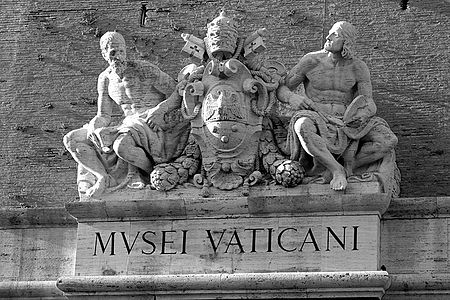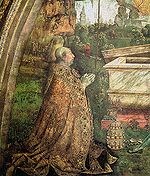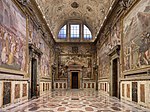Collection of Modern and Contemporary Art, Vatican Museums
1973 establishments in Vatican CityArt museums established in 1973Collections of the Vatican MuseumsModern art museums

The Collection of Modern and Contemporary Art is a collection of paintings, graphic art and sculptures in the Vatican Museums. It occupies 55 rooms: the Borgia Apartment (apartment of Pope Alexander VI) on the first floor of the Apostolic Palace, the two floors of the Salette Borgia, a series of rooms below the Sistine Chapel, and a series of rooms on the ground floor. Approximately 250 artists created over 500 pieces that are displayed in the Borgia Apartments. The Collection was officially introduced to the public on June 23, 1973.A permanent contemporary art gallery was installed on the premises in November 2021.
Excerpt from the Wikipedia article Collection of Modern and Contemporary Art, Vatican Museums (License: CC BY-SA 3.0, Authors, Images).Collection of Modern and Contemporary Art, Vatican Museums
Viale Oscar Romero,
Geographical coordinates (GPS) Address Nearby Places Show on map
Geographical coordinates (GPS)
| Latitude | Longitude |
|---|---|
| N 41.9033 ° | E 12.455 ° |
Address
Musei Vaticani
Viale Oscar Romero
00120 , Vatican City
Vatican City
Open on Google Maps











